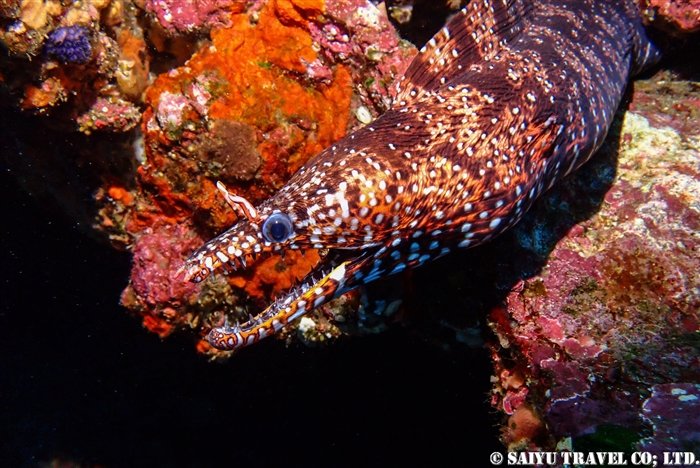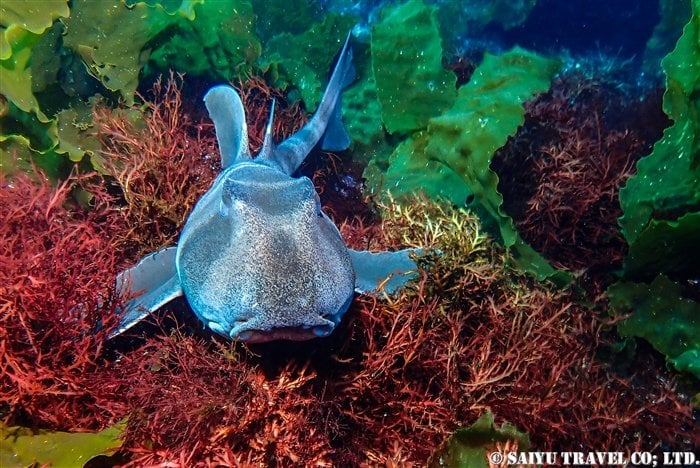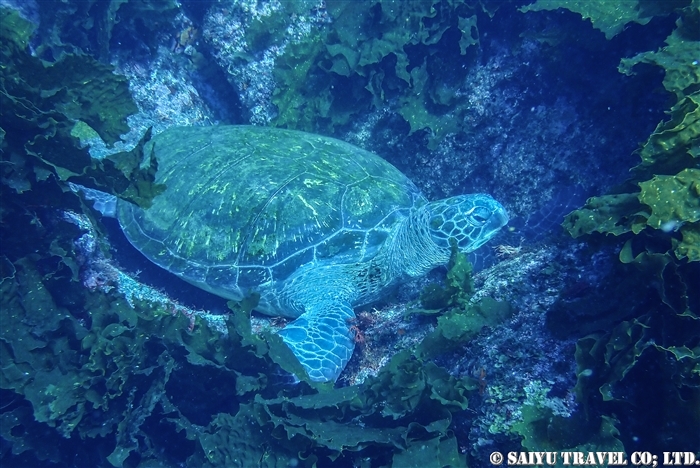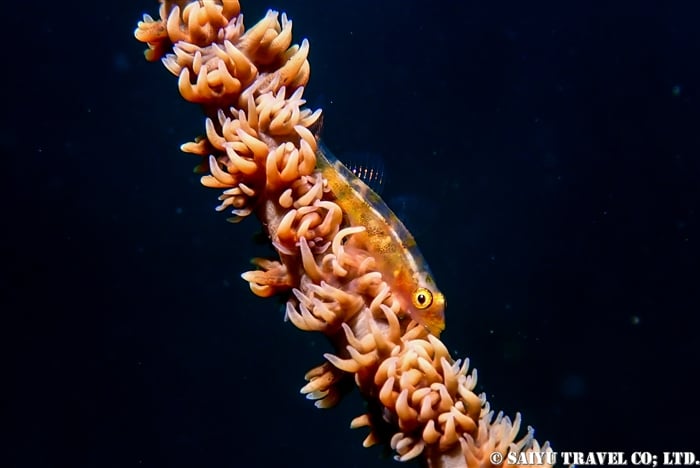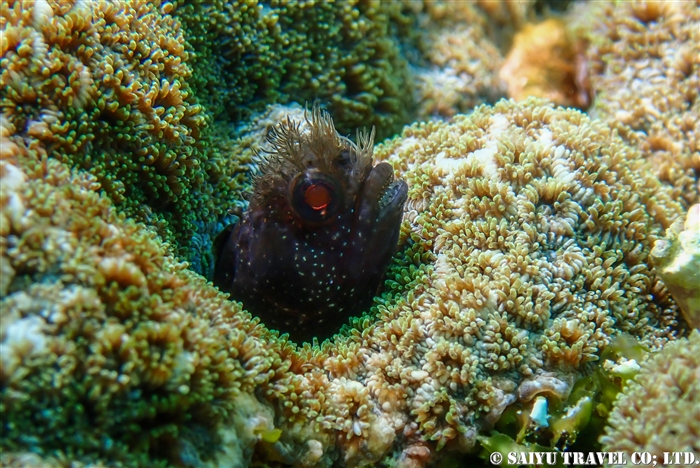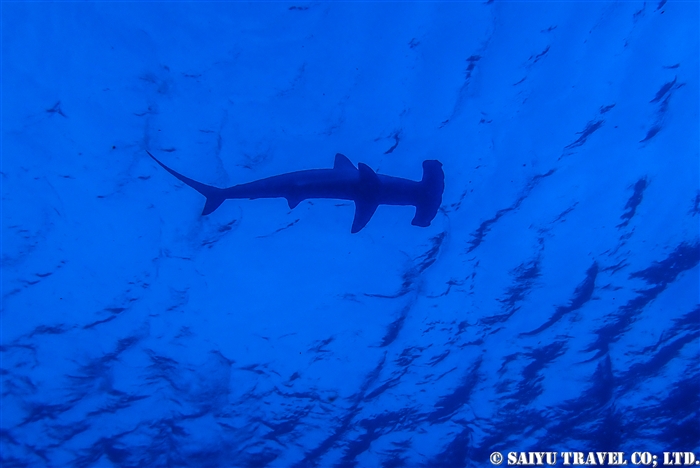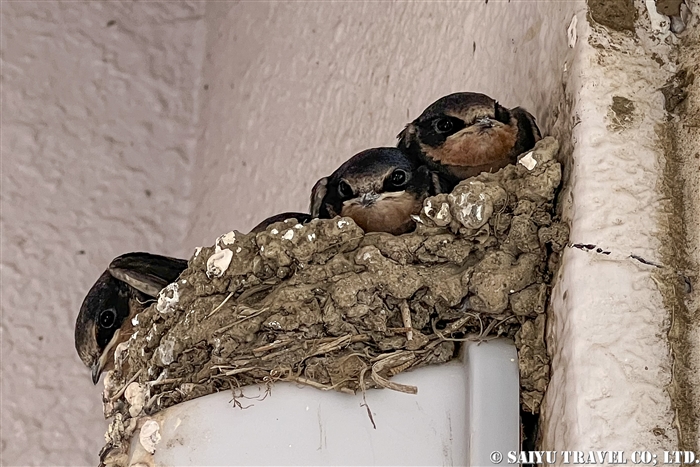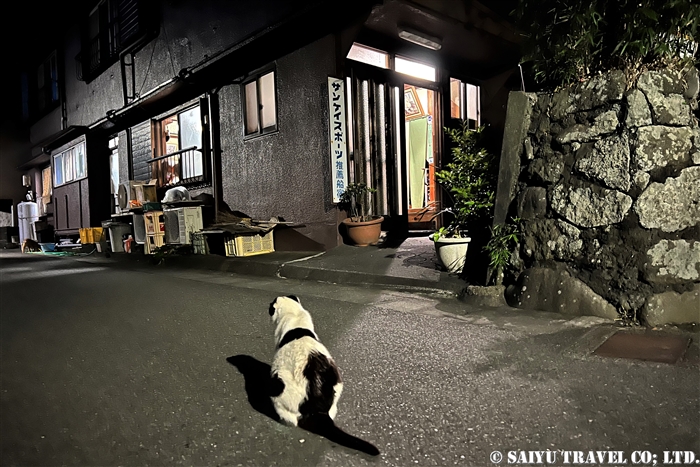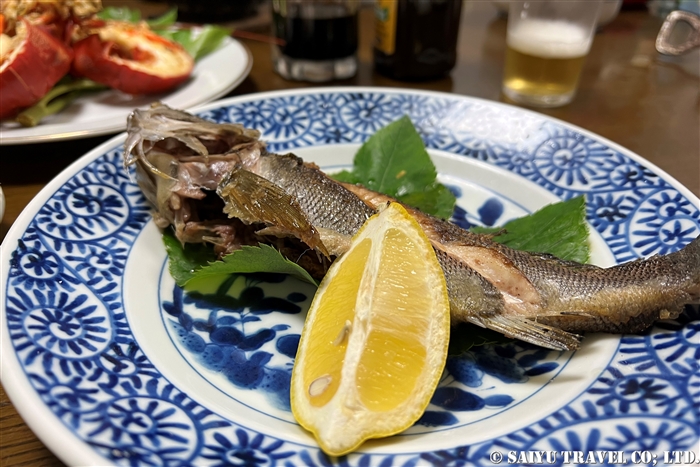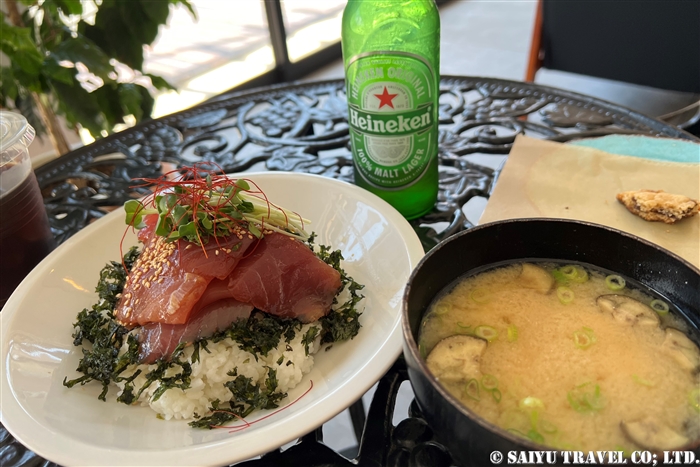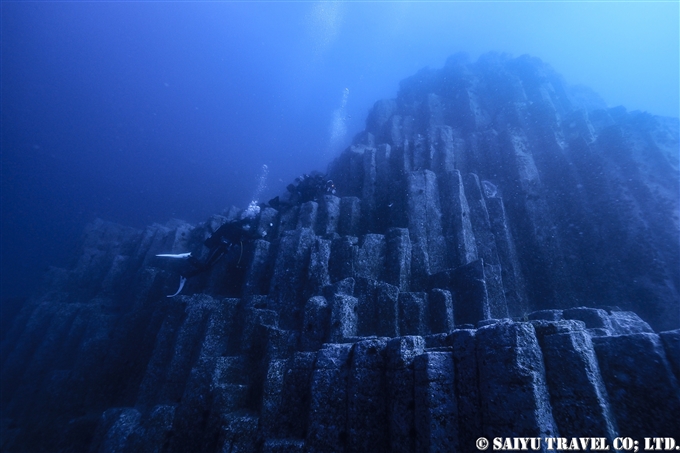
By car from Sapporo, the Shakotan Sea is 1 hour and 30 minutes by car. The scenic spot called the “Shakotan Blue” is famous for the high transparency of the water. The columnar joint formations look like underwater ruins, which are very famous.
Columnar formations are polygonal columnar fissures caused by volumetric contraction as the magma solidifies and then cools. It is a manifestation of the Pacific “Ring of Fire,” also known as the “volcanic archipelago.”
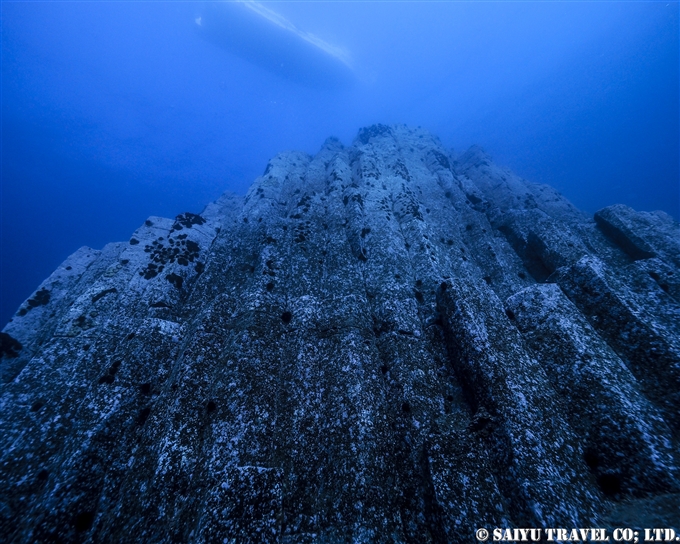
Looking up at the sea’s surface from the columnar joints.
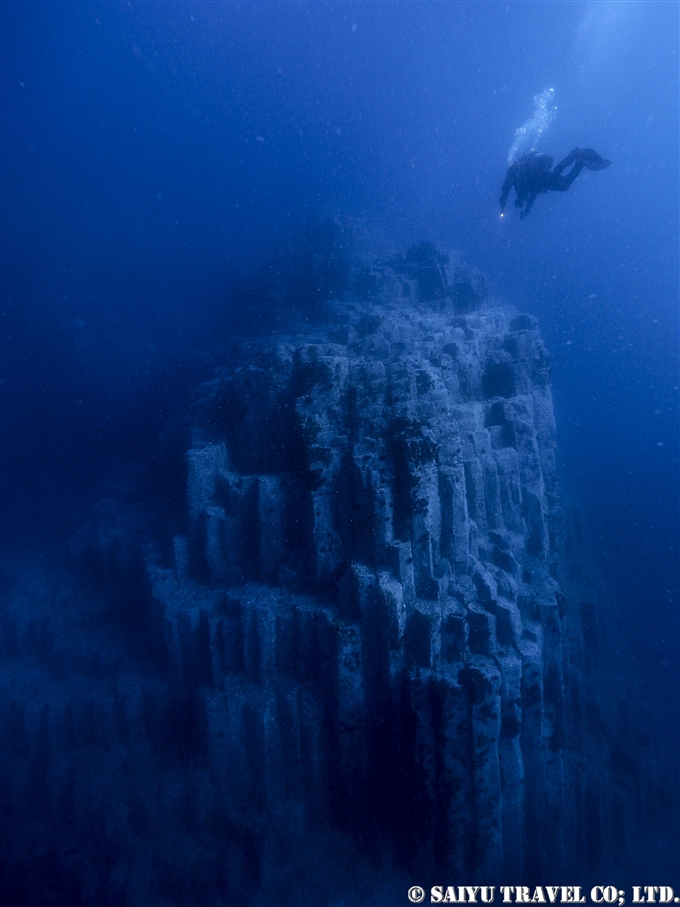
This point of the columnar joint is called the “hidden root of Biyano.” The depth here is about 25 meters, and it is too bad that it’s barely visible from the glass bottom boat.
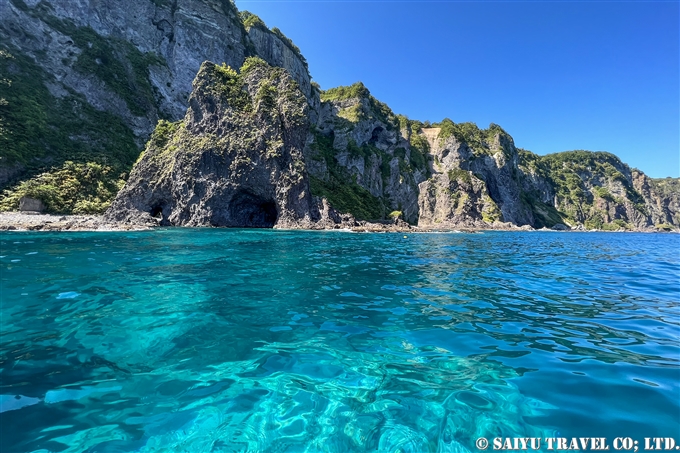
Heading towards the sites along the coastline. Diving the strait was blessed with good weather. When I visited in September, there wasn’t much marine life to see then…but I was able to see wonderful “Hokkaido’s sea creatures on the Sea of Japan side” with wonderful guides.
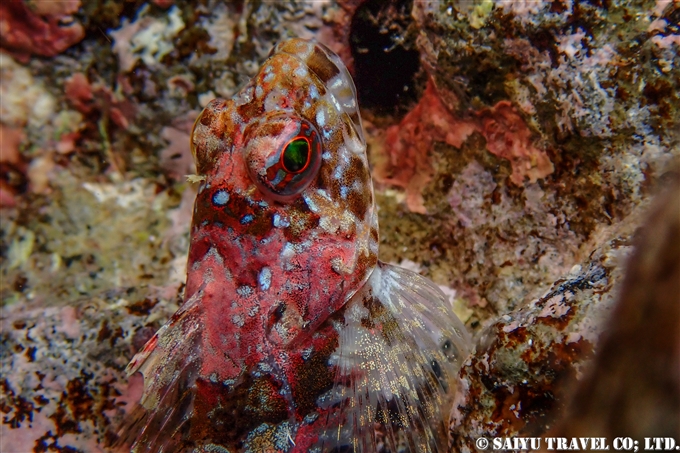
Ishikawa Sculpin Furcina ishikawae
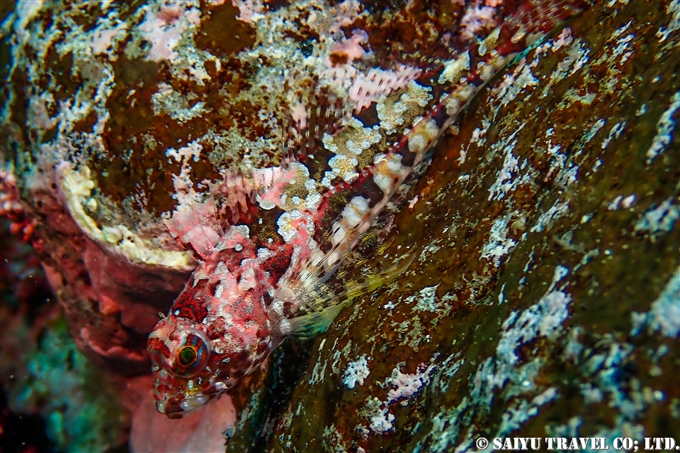
Nijikajika Alcichthys elongatus
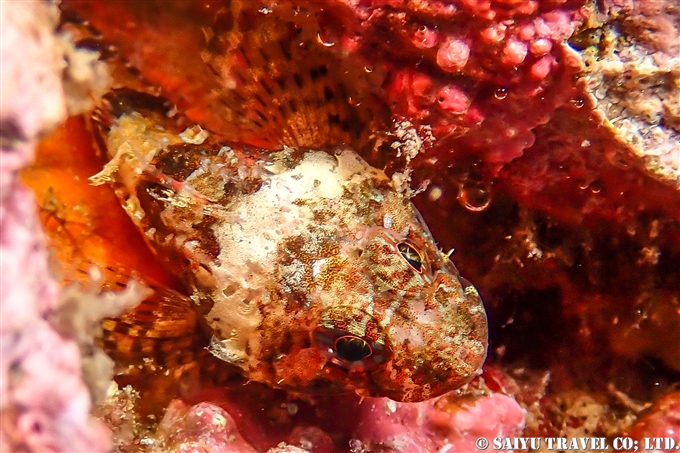
Pietsch Sculpin (Himefutasjikajika) Icelinus pietschi
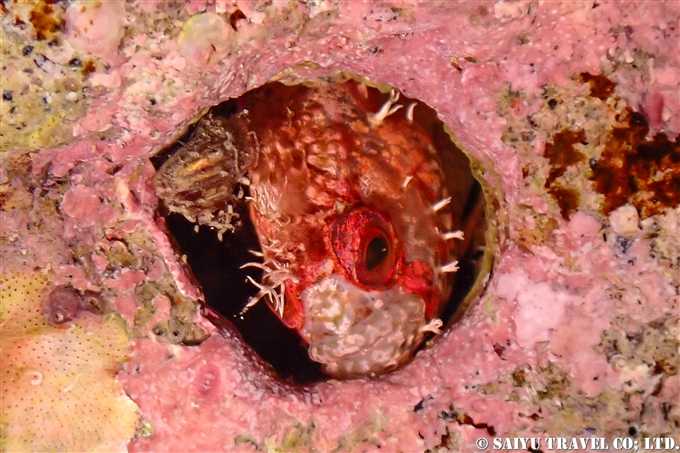
Akiginpo Chirolophis saitone
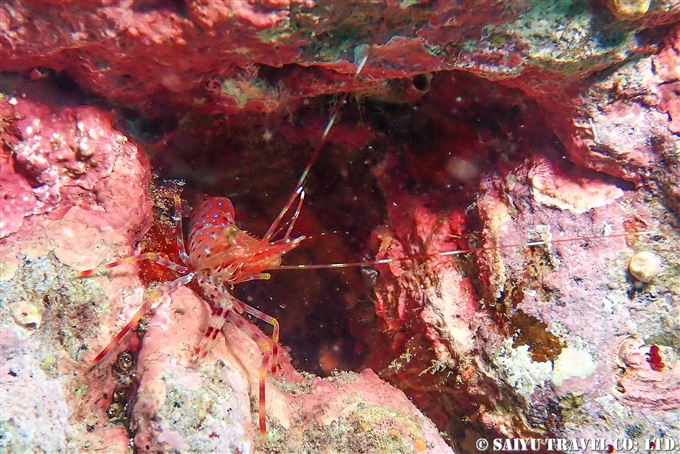
Far Eastern Shrimp Pandalus prensor Stimpson. Beautiful blue speckles. If eating it raw, it tastes like sweet pink shrimp.
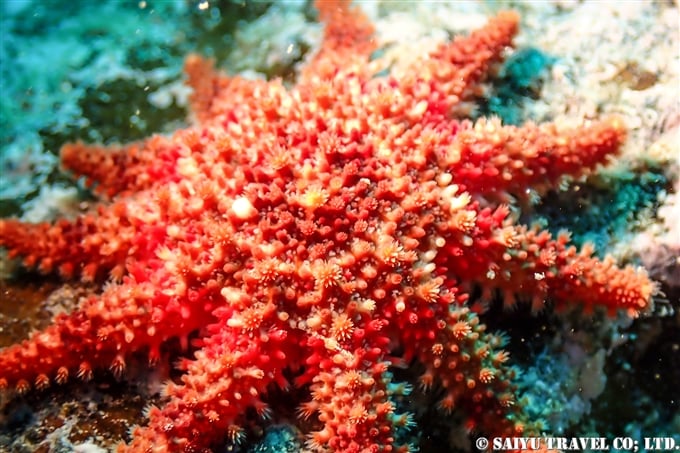
Common Sunstar Crossaster papposus. There are many legs, just like sunrays.
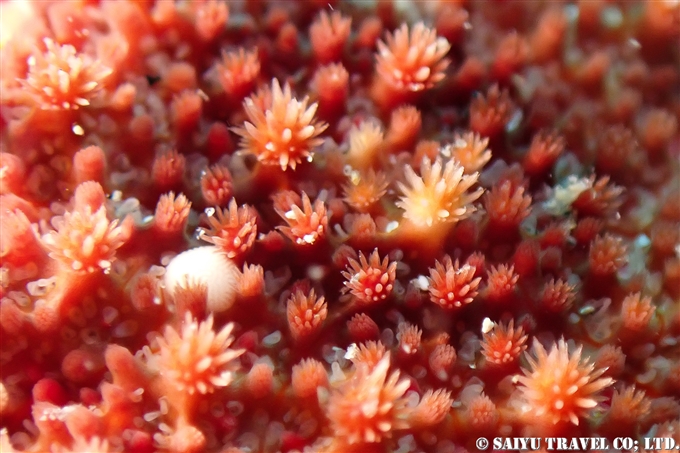
When you take a macro shot, it looks like a flower garden.
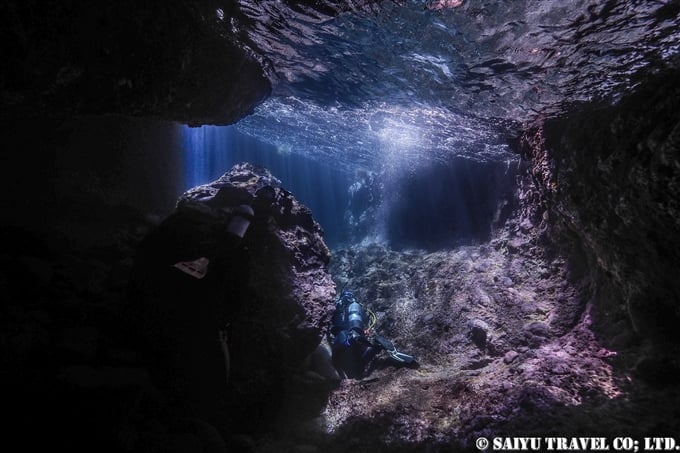
The coastal area’s rock walls which are carved by the waves, are a treasure trove for macro photography.
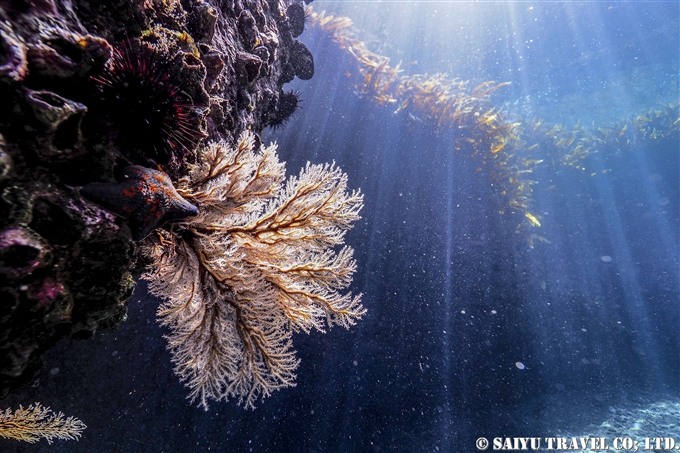
The kelp was a bit wilted, but the coral and kelp were beautiful.
Unfortunately, I could not eat the sea urchin because fishing was prohibited from August 31st. I decided to revisit Shakotan again in the future.
Image & Text: Mariko SAWADA
Observation: Sep 2022、Shakotan, Hokkaido
*Contact us, Saiyu Travel for more information about wildlife and bird watching in Hokkaido. We can make various arrangements for your trip. We have a guesthouse, Shiretoko Serai, in Rausu, Shiretoko Peninsula.
Tags: Saiyu Travel, Shakotan Blue, Columnar Joints, Dive in Japan, Shiretoko Serai, Scuba dive in Japan, Diving in Japan, Saiyu Travel Japan, Dive in Hokkaido, Shakotan, Sea of Hokkaido





